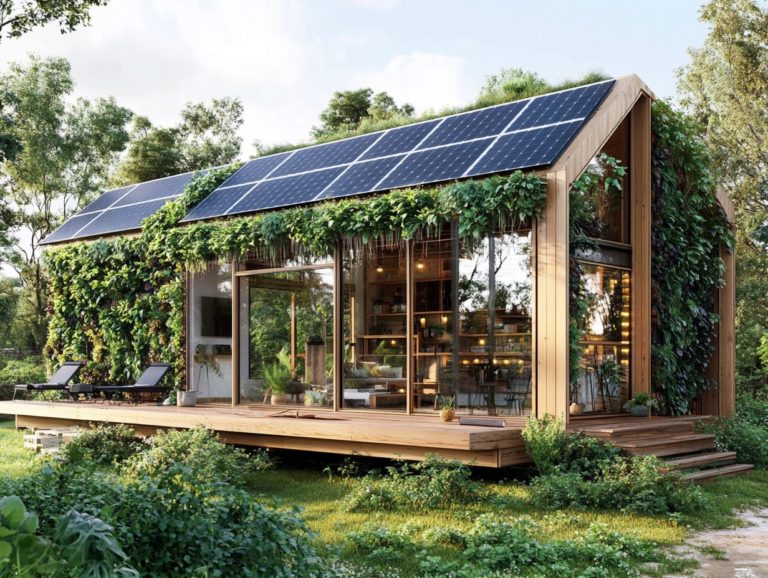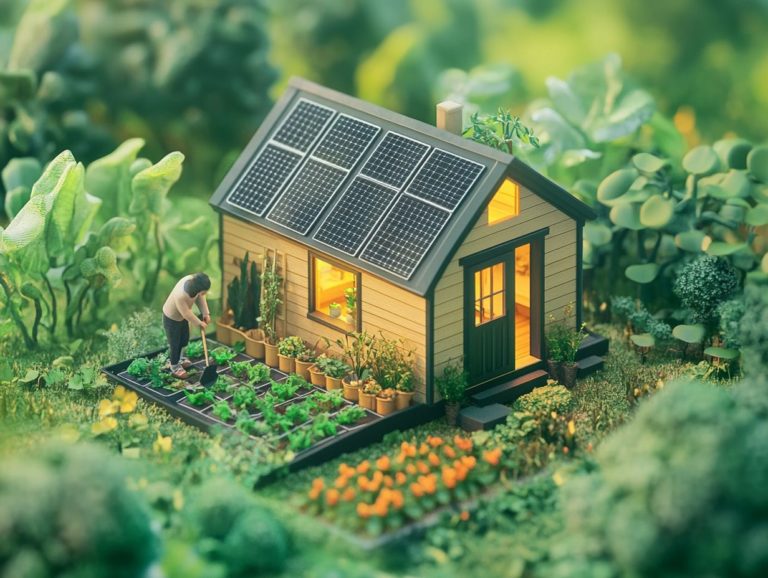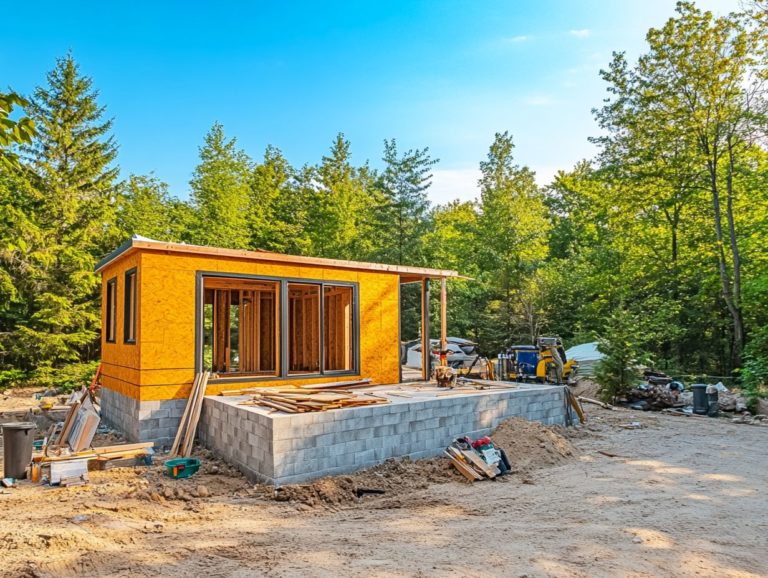Important Certifications for Sustainable Building Materials
Sustainable building materials are essential for crafting eco-friendly structures that benefit the environment. They also bolster the economy.
This exploration delves into the myriad advantages of utilizing these materials, from minimizing greenhouse gases produced to enhancing energy efficiency. It discusses crucial certifications such as LEED, Cradle to Cradle, and Green Seal, offering insights on how to acquire and uphold these standards.
You will also discover specific types of sustainable materials along with their unique benefits. Join us on this exciting journey to transform construction into a greener future!
Contents [hide]
- Key Takeaways:
- Benefits of Using Sustainable Building Materials
- Certifications for Sustainable Building Materials
- How to Obtain and Maintain Certifications
- Examples of Sustainable Building Materials
- Frequently Asked Questions
- What are some important certifications for sustainable building materials?
- How does LEED certification promote sustainable building materials?
- What is the Green Globes certification and how does it impact the use of sustainable building materials?
- How does the Living Building Challenge certification promote the use of sustainable building materials?
- Are there any certifications specifically for sustainable wood products?
- What are the benefits of using certified sustainable building materials?
Key Takeaways:

- LEED, Cradle to Cradle, and Green Seal certifications show how sustainable building materials benefit the environment and boost the economy.
- Getting and keeping these certifications means meeting certain requirements and renewing or recertifying periodically.
- Sustainable building materials come in various types, each with unique benefits for creating environmentally friendly and economically sound structures.
What are Sustainable Building Materials?
Sustainable building materials are essential components in your quest to construct or renovate green buildings. They focus on reducing environmental impact while enhancing energy efficiency and promoting health and well-being.
These materials meet rigorous ecological standards and play a significant role in lowering greenhouse gases produced and improving air quality. This makes them a vital part of sustainable practices in commercial real estate.
By choosing materials that comply with certification programs like LEED, BREEAM, and Energy Star, you can significantly elevate a project’s overall environmental performance. This ultimately boosts property values and adheres to design standards over time.
Aligning with the holistic approach of green building, sustainable materials emphasize the entire lifecycle of a structure from sourcing to disposal. By opting for recycled, renewable, and non-toxic products, you can create healthier indoor environments that positively impact occupants’ overall wellness.
These materials often offer superior durability and require less maintenance, leading to significant long-term cost savings.
Obtaining certifications from reputable programs assures compliance with stringent sustainability benchmarks. It also attracts environmentally conscious investors and buyers. This alignment with contemporary sustainable practices not only meets regulatory requirements but reaffirms your commitment to environmental stewardship, further driving innovation in the building industry.
Benefits of Using Sustainable Building Materials
By utilizing sustainable building materials in your construction projects, you unlock a multitude of benefits that span environmental, economic, and health dimensions. All these contribute to a more sustainable future.
These materials enhance energy efficiency and help mitigate waste generation. They also lower the overall carbon footprint of your buildings.
When you integrate green features and align with ecological standards established by reputable organizations like the National Association of Home Builders and the International Code Council, you elevate environmental performance. This simultaneously boosts property values in the commercial real estate market.
Start choosing sustainable materials today and make a difference!
Environmental and Economic Advantages
The environmental and economic advantages of sustainable building materials are truly noteworthy. They provide an effective means to enhance energy savings while minimizing the overall impact on the environment. By choosing materials that meet rigorous standards ensuring buildings are environmentally friendly, you can champion sustainability and unlock significant economic benefits, including reduced operational costs and higher property values.
Sustainable materials help reduce waste generation and create a healthier living environment, aligning perfectly with the rising demand for green building solutions.
These materials often consist of recycled content, reclaimed wood, and rapidly renewable resources. All of these play a crucial role in conserving the planet’s finite resources. By adhering to these standards, you showcase your commitment to responsible practices and attract environmentally conscious buyers.
Properties designed with sustainable features typically command higher resale values. This is thanks to their reduced impact on the environment and ongoing energy efficiencies.
Investing in sustainable building practices is not just a trend; it s a smart choice for the future! It supports both the environment and the economy, ensuring resilience in an ever-evolving world.
Certifications for Sustainable Building Materials
Certifications for sustainable building materials are essential in setting standards that promote sustainability, environmental impact, and performance within the construction industry.
Programs like LEED, BREEAM, and Energy Star offer comprehensive frameworks for assessing the sustainability of materials used in construction projects and their application process.
The WELL Building Standard and the Living Building Challenge focus on health and well-being. They underscore the importance of choosing materials that fulfill ecological criteria while enhancing occupant comfort and safety.
LEED Certification
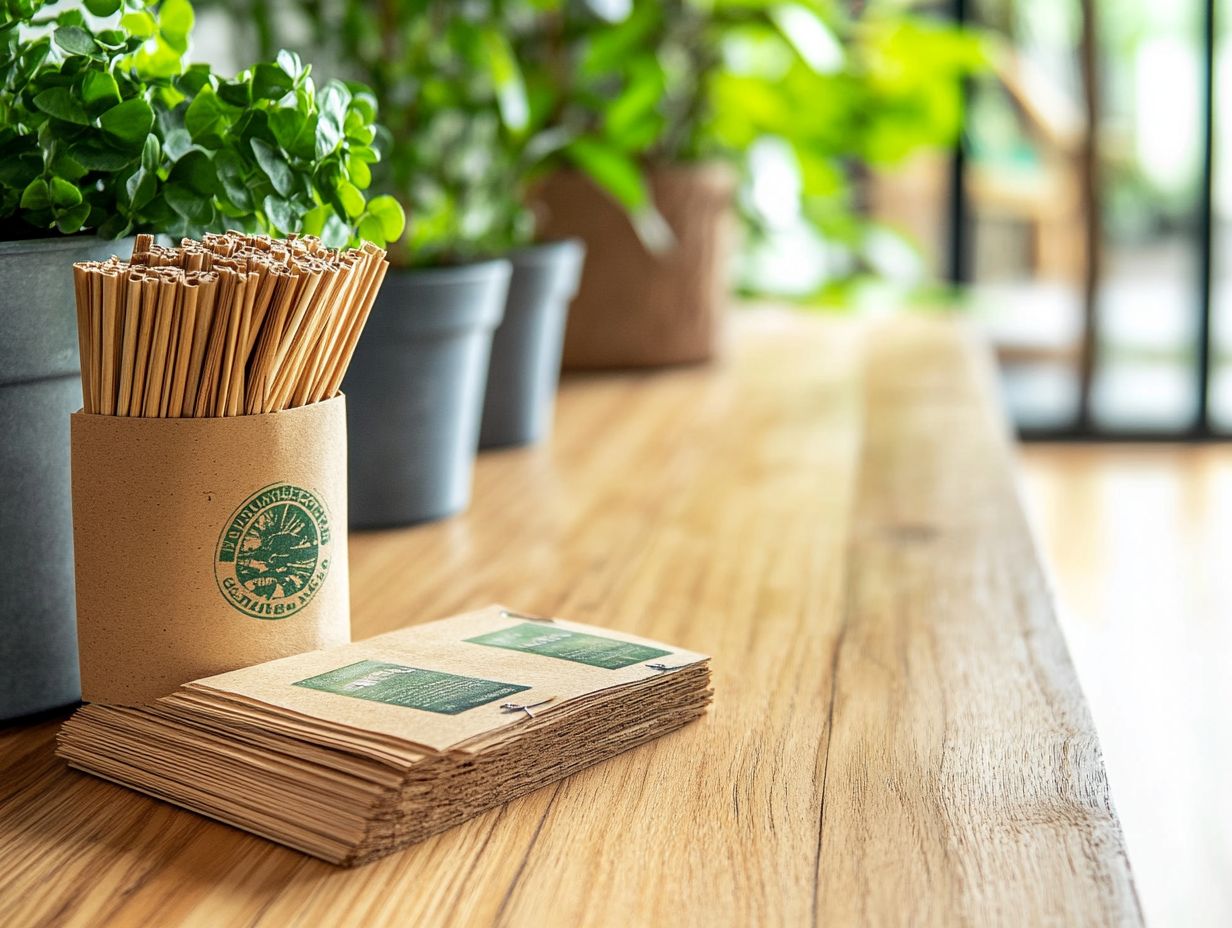
LEED certification, created by the U.S. Green Building Council, stands as a globally recognized benchmark for evaluating environmental performance in building design, construction, and renovation. This comprehensive program outlines various certification levels, each reflecting the degree of sustainability your project has achieved.
With rigorous standards, LEED ensures that your buildings comply with local codes while promoting energy efficiency, reducing water usage, and enhancing the overall health and well-being of occupants. This commitment can significantly elevate property values in the commercial real estate sector.
By embracing LEED standards, you can showcase your dedication to sustainable practices, reinforcing your reputation as a responsible player in the building industry. The certification levels Certified, Silver, Gold, and Platinum indicate varying degrees of achievement, motivating developers and architects to aim for higher standards.
Project verifiers play an essential role in this journey. They validate compliance with LEED criteria and confirm that all claims made by your project team are accurate. This thorough review process upholds the integrity of the certification system and fosters a culture of accountability and environmental stewardship throughout the construction landscape.
Act now to stay ahead in the green building revolution!
Cradle to Cradle Certification
Cradle to Cradle certification is a groundbreaking standard that evaluates the sustainability of products across their entire lifecycle. It champions a circular economy that minimizes waste and maximizes resource efficiency. This certification prioritizes sustainable practices by examining key factors such as material usage, environmental impact, and the social responsibility of manufacturers.
Consequently, products that meet Cradle to Cradle criteria not only adhere to rigorous ecological standards but also contribute to healthier living environments.
By emphasizing the connection between design, material health, and ethical production, this certification nurtures a more responsible approach to consumption. It prompts manufacturers to explore innovative materials that are safe for both human health and the ecosystem, while implementing processes that reduce emissions and conserve water.
Businesses that adopt this framework don t just set themselves apart in the marketplace; they also cultivate a culture of sustainability among consumers, empowering them to make informed choices that prioritize the health of our planet.
Green Seal Certification
Green Seal certification stands as a prestigious benchmark. It ensures that products not only meet but exceed environmental performance criteria while championing sustainability and health impacts. This certification targets sustainable products in various categories, like building materials, cleaning supplies, and personal care items.
By adhering to Green Seal criteria, manufacturers can proudly showcase their dedication to minimizing environmental impact and fostering healthier environments for everyone involved.
The certification process entails rigorous testing and evaluation, guaranteeing that each product surpasses existing environmental regulations and standards. If you re a manufacturer aiming for this certification, you ll need to provide clear records and adhere to guidelines that prioritize low toxicity, resource conservation, and overall sustainability.
Green Seal s commitment to eco-friendly practices empowers you, the consumer, to make informed choices, thereby nurturing a more sustainable marketplace. Its relevance stretches beyond individual products, playing a crucial role in broader initiatives focused on enhancing environmental performance and protecting public health. It s a vital part of the green movement today! Are you ready to make a difference?
How to Obtain and Maintain Certifications
Obtaining and maintaining certifications for sustainable building materials requires a methodical approach. You’ll need to navigate the certification process, meet specific application requirements, and commit to ongoing maintenance training in line with certification programs like LEED and BREEAM.
Typically, the application involves submitting comprehensive project documentation and may include certification fees, depending on the program you choose. Keeping certifications up-to-date often necessitates periodic renewal and recertification, ensuring that your materials and practices consistently align with evolving environmental standards and performance criteria.
Application Process and Requirements
The application process for obtaining certification for sustainable building materials is a complex journey that demands careful planning and thorough documentation from your project teams. You’ll need to comply with building codes and other design standards.
To successfully navigate this process, you must gather comprehensive data that demonstrates the life stages of the materials covering sourcing, manufacturing, usage, and disposal aspects. Compliance with recognized standards from organizations like the Forest Stewardship Council (FSC) or the Leadership in Energy and Environmental Design (LEED) is vital; it not only assures credibility but also significantly enhances your marketability.
It’s essential to implement rigorous internal checks to ensure that all documentation is accurate and current. This diligence minimizes the risk of delays or rejections due to incomplete submissions. Such meticulous attention to detail highlights the vital role of sustainability in today s construction practices.
Renewal and Recertification
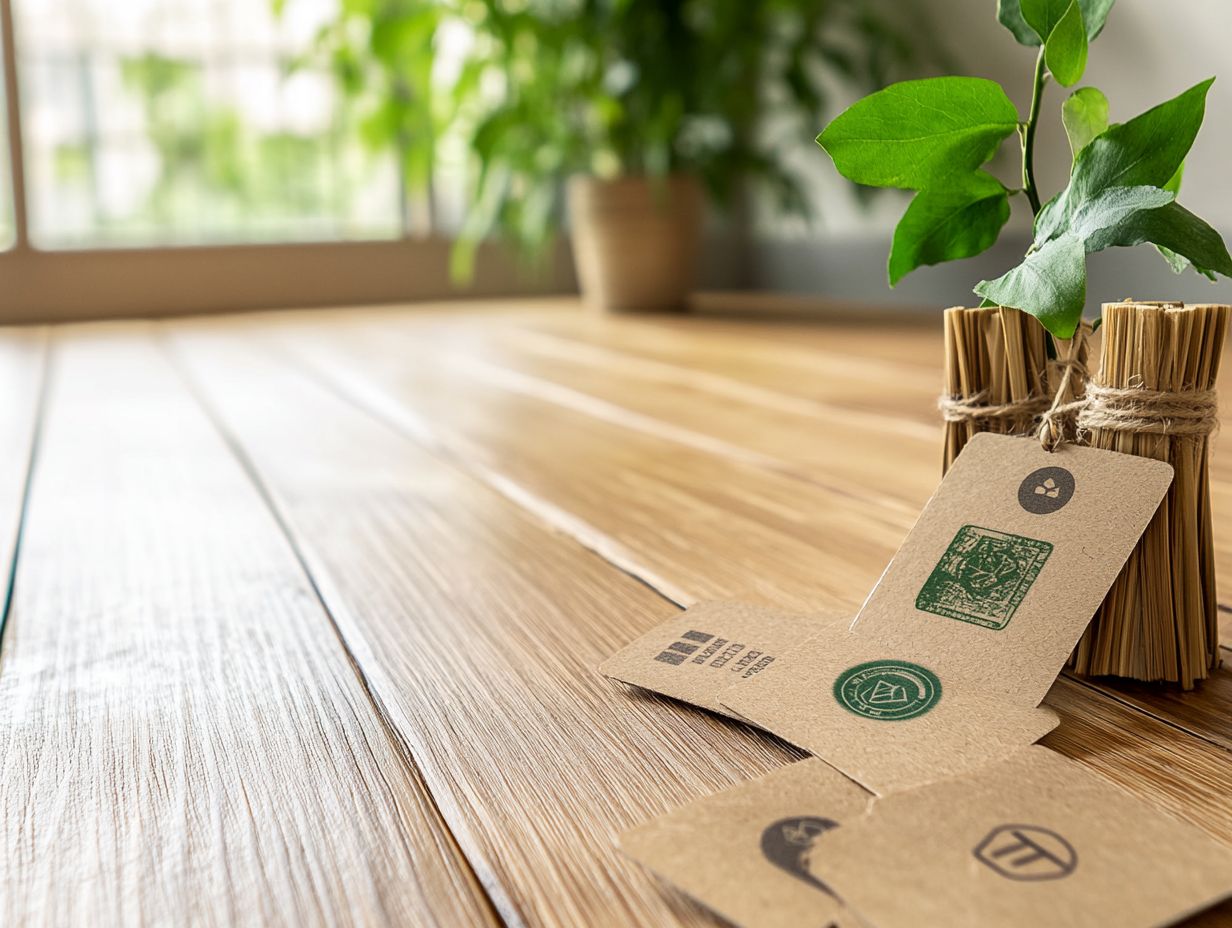
Renewal and recertification are vital elements of the certification process for sustainable building materials, ensuring that you remain compliant with ever-evolving environmental standards. To keep your certified status, you must consistently demonstrate your commitment to sustainability through ongoing maintenance training and adherence to updated certification criteria.
This proactive approach drives continuous improvement and bolsters the integrity and credibility of the certification program. The sustainability landscape is constantly in flux, shaped by emerging technologies and shifting regulations. Therefore, staying attuned to these changes is essential for organizations involved in sustainable building practices. You need to update your processes and materials to align with the latest standards.
Regular recertification serves as a benchmark, encouraging you to not only follow existing guidelines but also to innovate and embrace best practices. This ongoing cycle of evaluation and improvement is crucial, ensuring that your certified products meet consumers’ demand for environmentally responsible solutions, ultimately contributing to a more sustainable future.
Examples of Sustainable Building Materials
Sustainable building materials present a remarkable array of choices that elevate energy efficiency and enhance environmental performance while reducing the carbon footprint.
Consider options such as recycled materials, low-emission products, and sustainably sourced wood. Each of these materials comes with distinct green features that effectively minimize carbon footprints and reduce waste in construction endeavors.
By opting for these materials, you can significantly bolster the ecological impact of your projects while seamlessly aligning with certification standards like LEED and BREEAM.
Join the movement towards a sustainable future! Explore our range of sustainable materials and take the first step towards a greener building project!
Types of Materials and Their Benefits
Explore a variety of sustainable materials for your construction projects. These options offer unique benefits like energy savings and better air quality.
Consider options like bamboo, reclaimed wood, recycled metal, and low-VOC paints. These materials enhance energy efficiency while minimizing the health risks typically associated with conventional building products.
By embracing these sustainable practices, you not only meet certification standards but also create healthier indoor environments and reduce your ecological footprint.
Among these choices, bamboo truly shines with its rapid growth and impressive carbon-sequestering abilities. Reclaimed wood not only conserves natural resources but also infuses your space with distinctive character. On the other hand, recycled metal offers durability and longevity, minimizing the need for frequent replacements.
Low-VOC paints play a crucial role in improving air quality by reducing harmful emissions, which is vital for promoting sustainable health impacts. Together, these materials create a harmonious blend of environmental stewardship and modern construction demands. They pave the way for energy-efficient buildings that enhance occupant well-being while preserving ecological integrity.
Frequently Asked Questions
What are some important certifications for sustainable building materials?

Key certifications include LEED (Leadership in Energy and Environmental Design), Green Globes, and the Living Building Challenge. Other notable certifications are GreenGuard and NABERS.
How does LEED certification promote sustainable building materials?
LEED certification promotes sustainable building materials by setting rigorous standards for energy efficiency, water conservation, materials selection, and indoor environmental quality. Materials must meet certain criteria to be considered sustainable, such as being made from recycled materials or being locally sourced.
What is the Green Globes certification and how does it impact the use of sustainable building materials?
The Green Globes certification is a rating system that evaluates the sustainability of buildings based on seven categories, including energy, materials, and indoor environmental quality. It encourages the use of sustainable building materials by awarding points for their use and requiring a certain percentage of materials to be recycled or have a low environmental impact. This helps buildings perform better for the environment.
How does the Living Building Challenge certification promote the use of sustainable building materials?
The Living Building Challenge certification sets the bar high for green building standards. Its primary focus is on the use of sustainable materials. It requires that all materials used in a building must be non-toxic, responsibly sourced, and have a net positive impact on the environment, aligning with the California Green Building Standards Code, which sets the minimum requirements for sustainable building practices in California.
Are there any certifications specifically for sustainable wood products?
Yes, the Forest Stewardship Council (FSC) certification is for wood products that have been responsibly and sustainably sourced from forests. It ensures that the wood comes from forests managed in an environmentally and socially responsible manner.
What are the benefits of using certified sustainable building materials?
Using certified sustainable building materials not only benefits the environment by reducing waste and conserving resources, but it can also improve the health and well-being of building occupants. These materials are often non-toxic and have a lower carbon footprint, creating a healthier and more sustainable living or working environment! They may also qualify for incentives from the Environmental Protection Agency.


